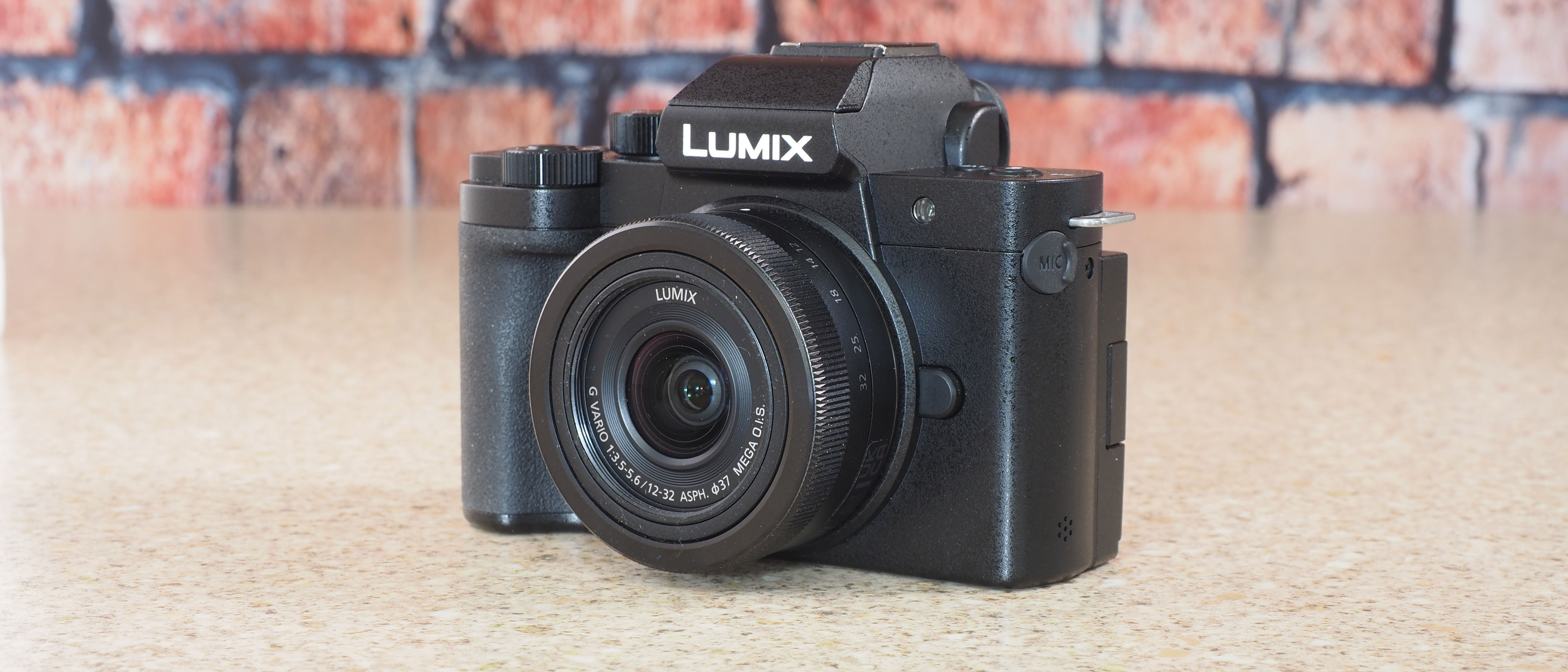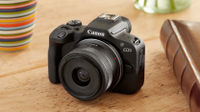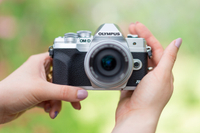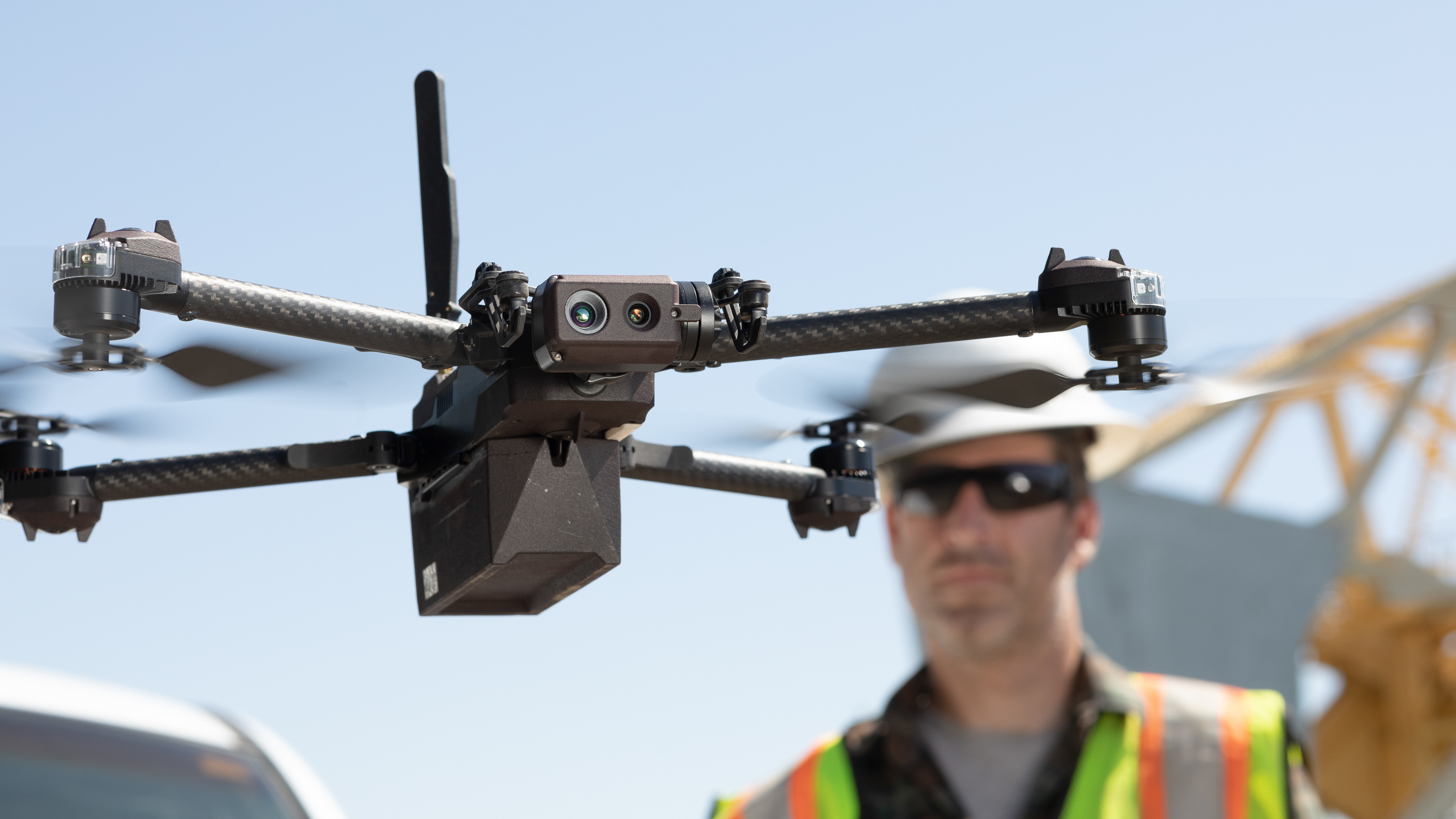Digital Camera World Verdict
The Panasonic Lumix G100D is the baby of the Lumix mirrorless range. It’s the cheapest and smallest in the line-up but it still boasts an electronic viewfinder, 4K video and a clever multi-pattern mic array that can adapt to different surroundings. But while the 20MP MFT sensor is still fine by today’s standards, the G100D lacks in-body image stabilization, and that could really hold it back for novice vloggers. It’s also not really a replacement for the original G100, just a very minor modification that’s progressively taking over. The G100D is cheap, powerful and pretty good, but it has its limits.
Pros
- +
Inexpensive for beginners
- +
4K video
- +
Advanced mic array
- +
Decent EVF
- +
Vari-angle screen
Cons
- -
No in-body stabilization
- -
Small and slightly cramped
Why you can trust Digital Camera World
The original Panasonic Lumix G100 was launched back in 2020 as a kind of baby-faced entry point to the Lumix mirrorless camera range, and with a special emphasis on vlogging features, notably a vari-angle screen and an advanced mic array with different pickup patterns for different shooting styles and situations.
The Lumix G100D is a newer variant that is more of a maintenance release than a new camera. The fundamental features and design haven’t changed at all. There are really just two differences; the EVF has dropped slightly in resolution from 3.68 million dots to 2.36 million, but has also swapped from TFT technology to OLED – so the resolution is lower but the screen is better.
The second change is the provision of a USB-C port (though this still runs at USB 2 speeds). This was probably in response to changing camera legislation and does at least allow easy USB charging from power banks.
The rest is the same. You get a 20-megapixel MFT Live MOS sensor in a baby-SLR design with an electronic viewfinder housing on the top and a good quality flip-out vari-angle screen on the back. The Micro Four Thirds format has a serious track record for filmmakers and vloggers, offering light weight and affordability but also professional capabilities.
The Lumix G100D brings this to the beginner market too, though it’s a shadow of cameras like the Lumix GH5 II and GH6. The lack of in-built image stabilization is perhaps its most serious limitation, and while it does have an OZO Audio system by Nokia that offers different pickup patterns for different situations, the reality is that for proper audio you really do need an external microphone and of the right type.
But let’s be fair. The Lumix G100D is also a pretty good stills camera. The 20MP sensor captures lots of detail, the EVF is rather good and the vari-angle screen adds even more shooting flexibility. Don’t think of it just as a vlogging camera that can shoot stills – it’s also a rather good hybrid travel/fashion camera that can shoot both. It might not be the best hybrid camera out there or even the best camera for vlogging, but it still deserves to be considered amongst the best cameras for beginners.
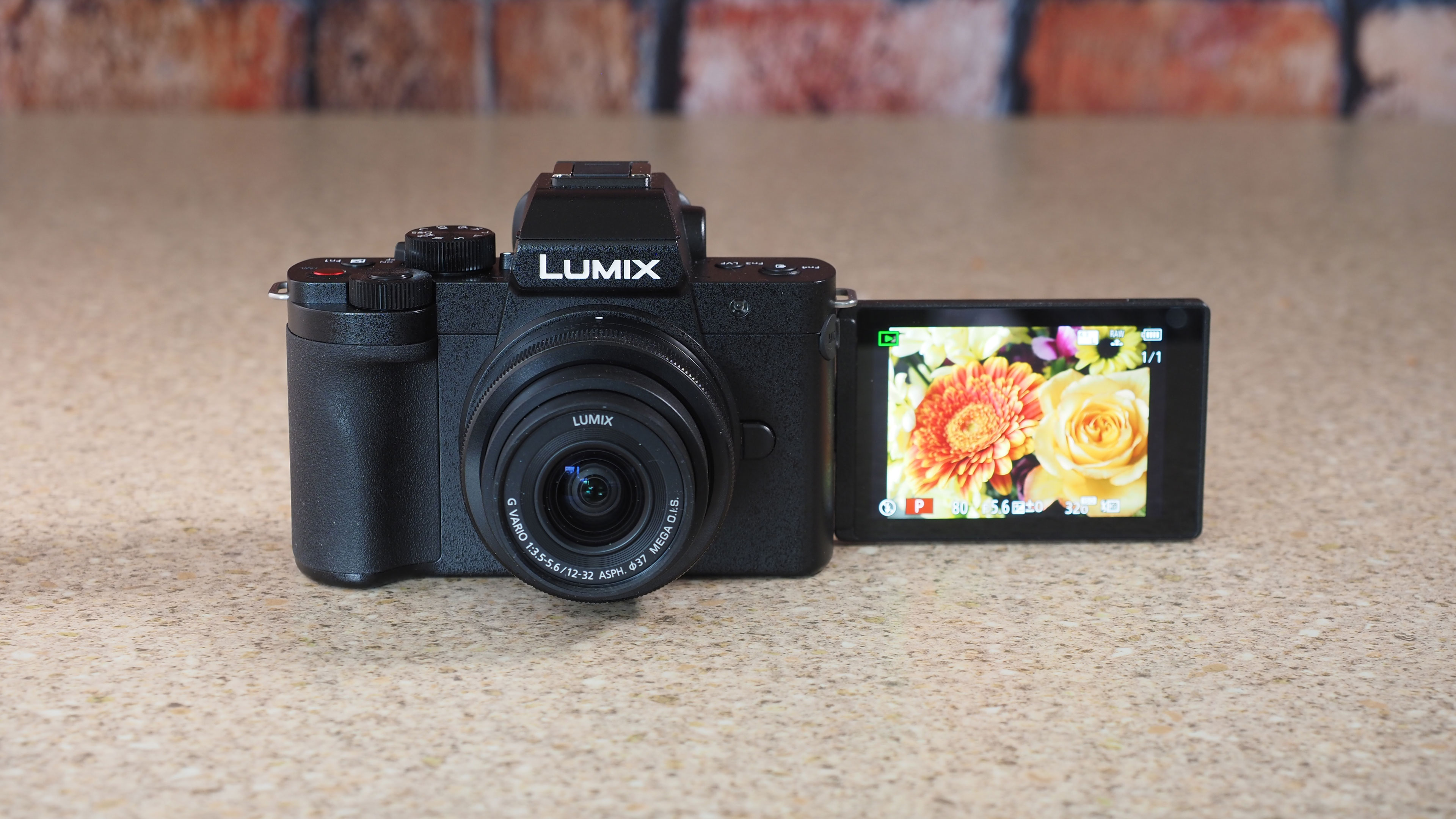
Panasonic Lumix G100D: Specifications
| Type | Mirrorless |
| Format | Micro Four Thirds |
| Lens mount | MFT |
| Sensor | 20.3MP Live MOS |
| ISO range | 200-25,600 (ISO 100 extended mode) |
| Viewfinder | 2.36M-dot OLED EVF, 0.74x magnification |
| Screen | 3.0-in 1.84M-dot vari-angle |
| Burst speed | 6fps, 5fps with AF |
| Image stabilization | Digital EIS, lens IS where available, no IBIS |
| Video | 4K 30p, FHD 60p, S&Q mode up to 4x slow motion, 8x quick motion |
| Memory | Single UHS-1 SD slot |
| Battery life | 280/270 shots (EVF/rear screen) |
| Size and weight | 115.6 x 83.1 x 54.2 mm, 346g |
Panasonic Lumix G100D: Price
The Panasonic Lumix G100D currently sells for around $748 in the US with the 12-32mm retracting kit lens, and around £619 in the UK. That makes it one of the cheapest mirrorless cameras on the market right now. It’s significantly cheaper than its nearest OM System rival, the OM-D E-M10 Mark IV, but both are heavily undercut by the Canon EOS R100 with kit lens, at around $499 / £599.
It’s not quite the cheapest new mirrorless camera you can buy, then, but it’s still very affordable and its video features are pretty good for the money – an important factor for beginner photographers and vloggers.
Panasonic Lumix G100D: Design and handling
The Lumix G100D is a small camera but keeps a DSLR-style shape, and this does give it a certain cute appeal. There is a decent sized grip on the right side that makes it quite secure to hold, though it’s going to feel a little unbalanced with larger lenses. We tested it with the compact 12-32mm kit zoom, though the G100D can of course accept any Micro Four Thirds lens.
The EVF is pretty good. You don’t really notice the drop in resolution compared to the original model – it’s sharp and clear and the colors are good. The same goes for the rear screen, which has a higher than usual resolution for a camera at this price point. The fold-out screen pivot feels pretty robust too.
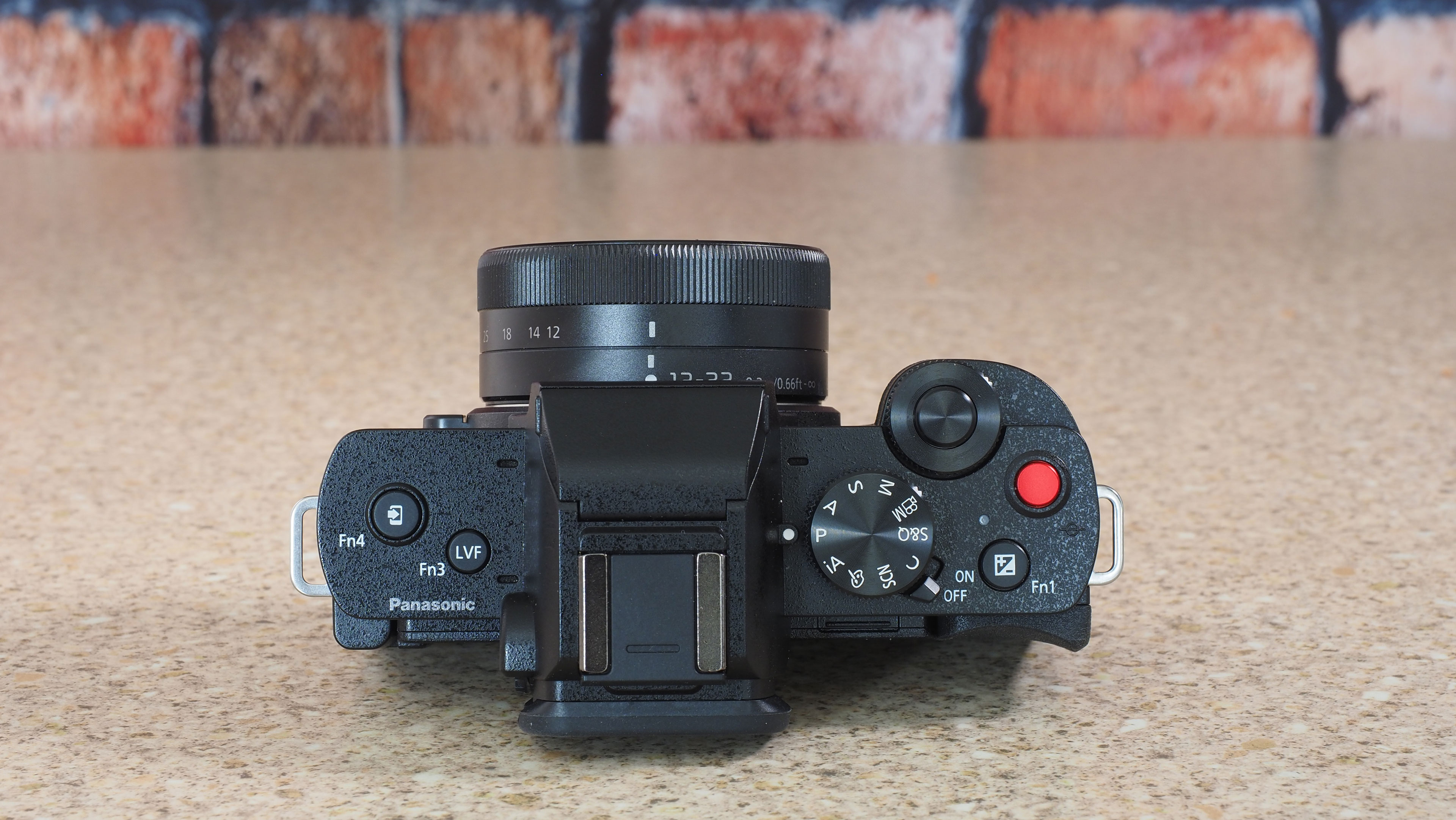
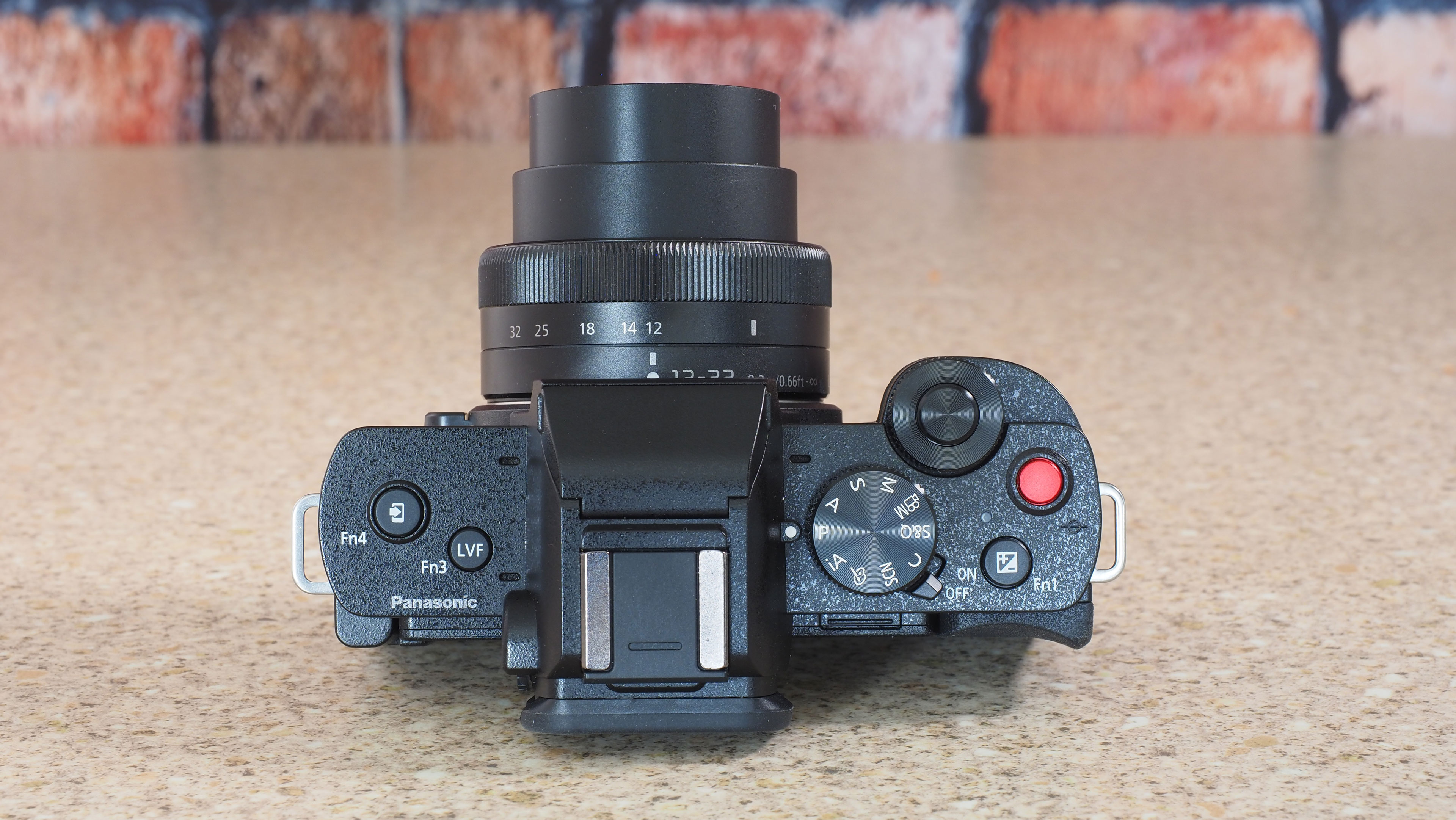
The power switch is located slightly awkwardly under the main mode dial, but you get used to that. There’s a control dial around the shutter release and a prominent red ‘record’ button to the right.
There’s a second control dial on the back which doubles as the camera’s four-way controller. These can be annoying, but on the Lumix G100D it’s relatively easy to turn this dial without accidentally pressing the buttons… mostly.
The buttons are pretty tightly clustered on the back because the space taken up by the rear screen and the (useful) thumbrest doesn’t leave much room. They work well enough, but they are flush to the camera body so you do need to look to check what you’re pressing.
Overall, the Lumix G100D is a nicely designed little camera that handles pretty well for its size. It is so diminutive, though, that with your fingers around the front grip it’s not really wedging into the palm of your hand.
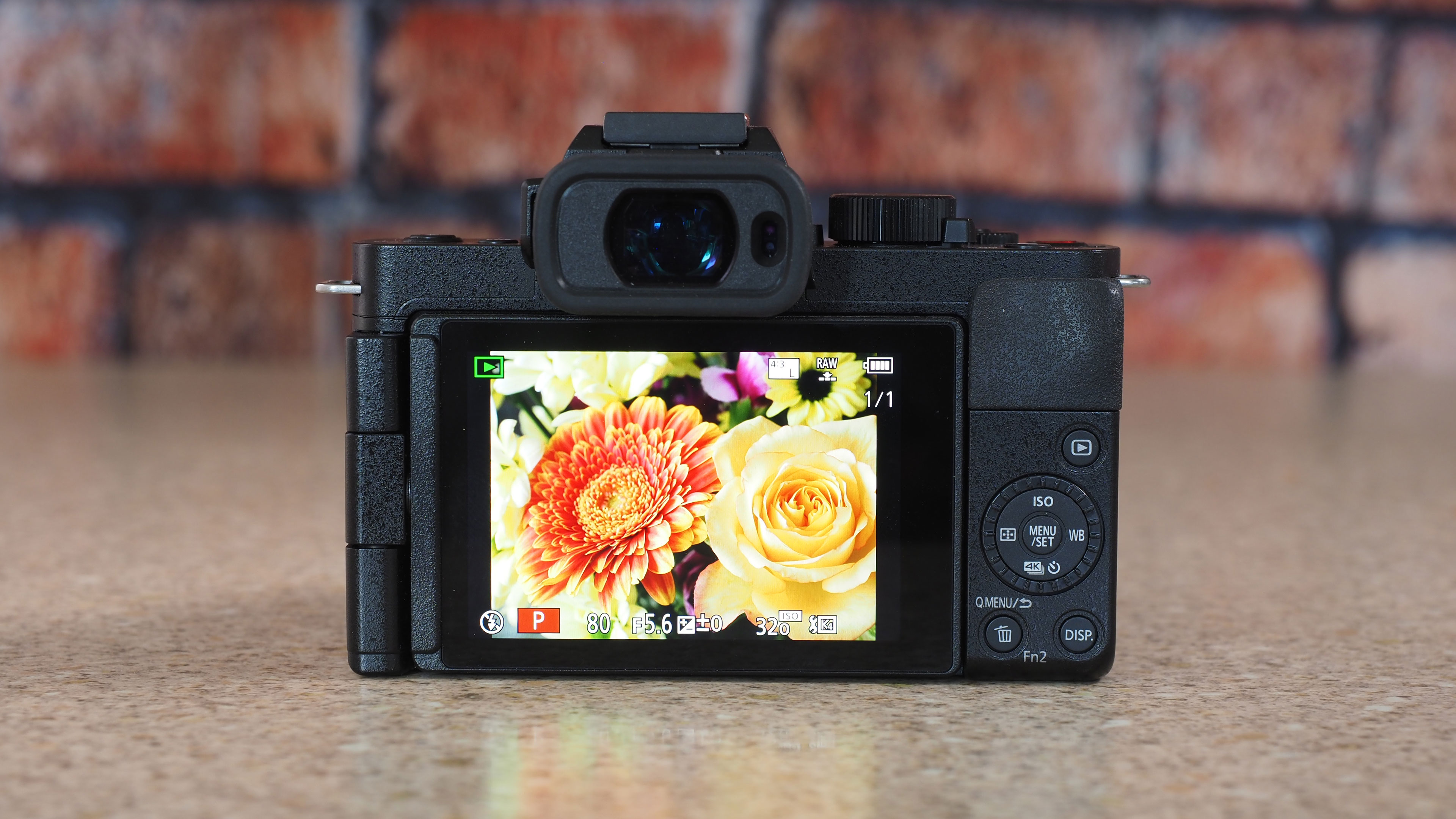
Panasonic Lumix G100D: Photo performance
As a stills camera, the Lumix G100D is very good. The 20MP MFT sensor delivers plenty of detail, and it’s not really at any great disadvantage compared to larger-sensor APS-C rivals, except perhaps at higher sensitivity settings beyond ISO 3200.
Probably the biggest difference is its native 4:3 aspect ratio, which some might find a little ‘square’ compared to the 3:2 ratio of APS-C and full frame cameras. You can shoot at a 3:2 ratio, but then you’re cropping some of those megapixels.
The G100D might use contrast AF rather than phase detect AF, but you’d never know it when shooting stills. It’s very fast and very positive, and you have a choice of AF patterns for different subjects and scenarios – including effective face detection.
This is not a camera for fast-paced action, though. Its maximum 6fps burst speed is pretty low by current standards, and it drops to 5fps with continuous AF.
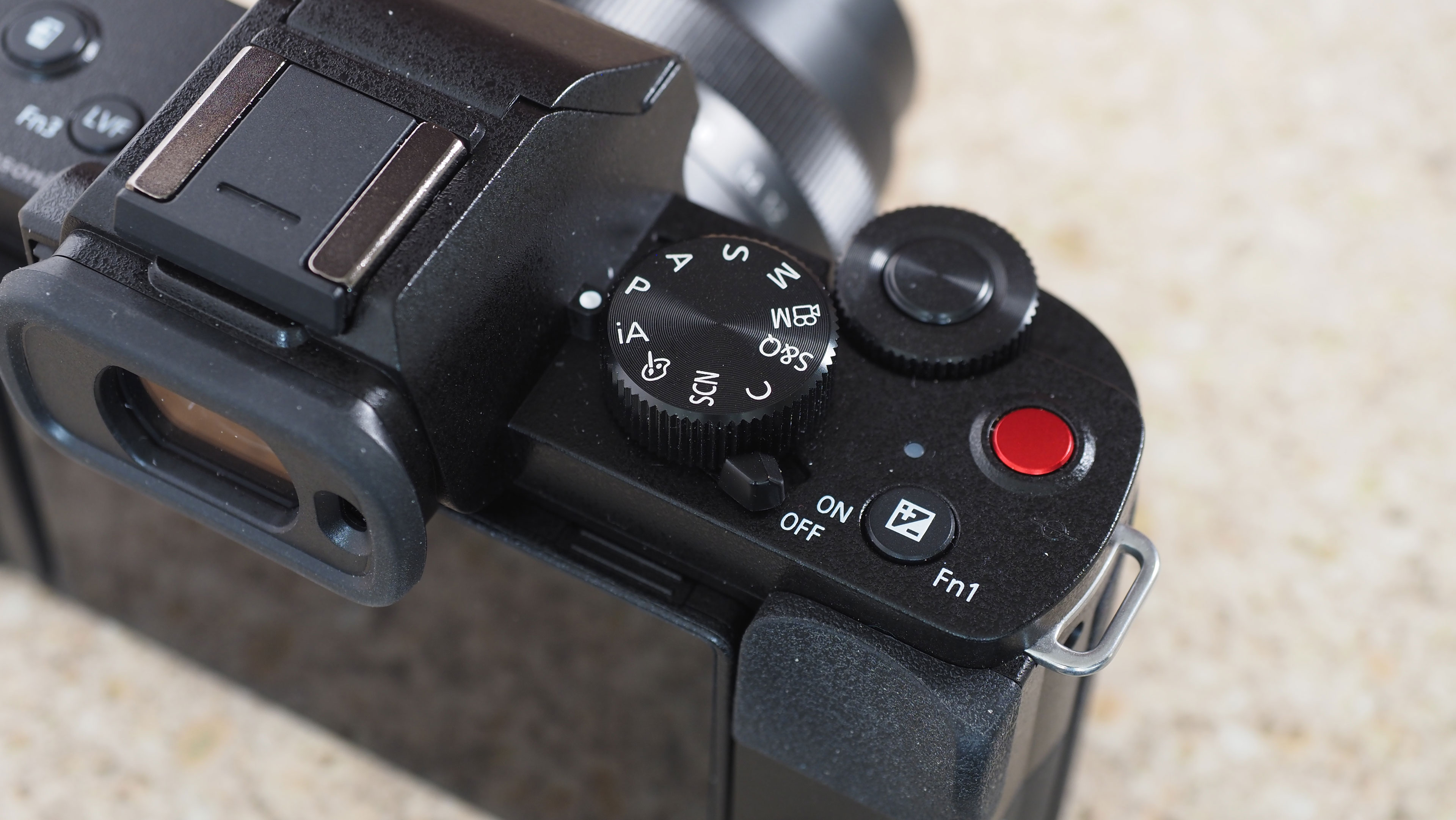
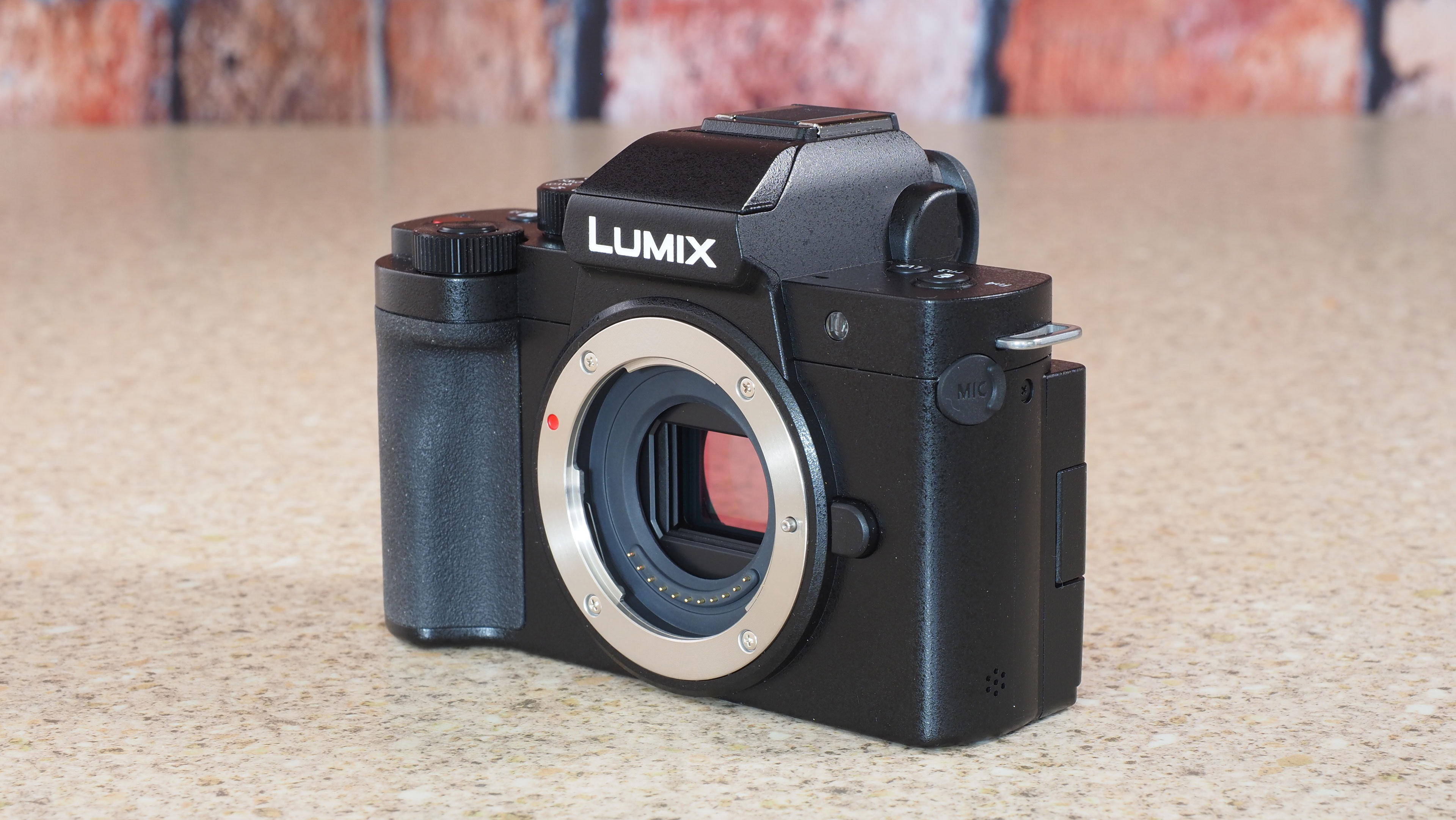
The lack of in-body image stabilization is a drawback too. Some Lumix G lenses have optical stabilization built in, including the kit lens, but it does limit the G100D somewhat for low light shooting and may force you to set the ISO higher than you would like.
Action photography aside, this is a great little camera for stills. The photo quality is as good as any other Micro Four Thirds camera when you’re using the same lenses. The 12-32mm f/3.5-5.6 retracting kit lens is not the best, however. It’s good enough for snapshots and casual use, but you might want to swap to a better lens later on.
Panasonic Lumix G100D: Sample photos


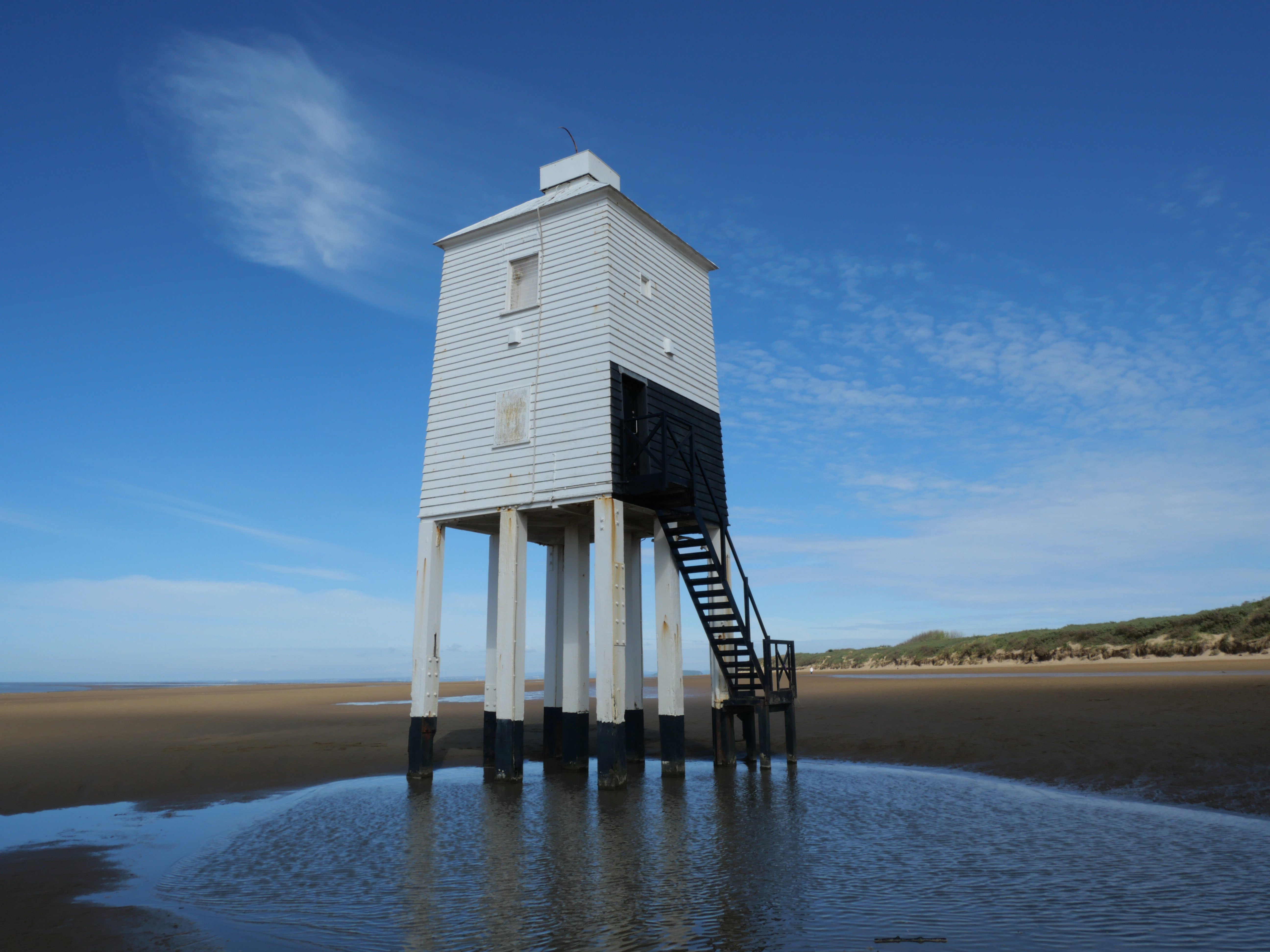




Panasonic Lumix G100D: Lab results
For our lab data comparison we chose three similar entry-level mirrorless cameras: the Canon EOS R100, as we think this is the best beginner interchangeable lens camera right now. The OM System (previously Olympus) OM-D E-M10 IV is another great entry-level stills camera, and the Sony ZV-E10 is a good match for the G100D's video capabilities.
We test resolution using Imatest charts and software, and dynamic range and signal to noise ratio with DxO Analyzer.
Resolution:
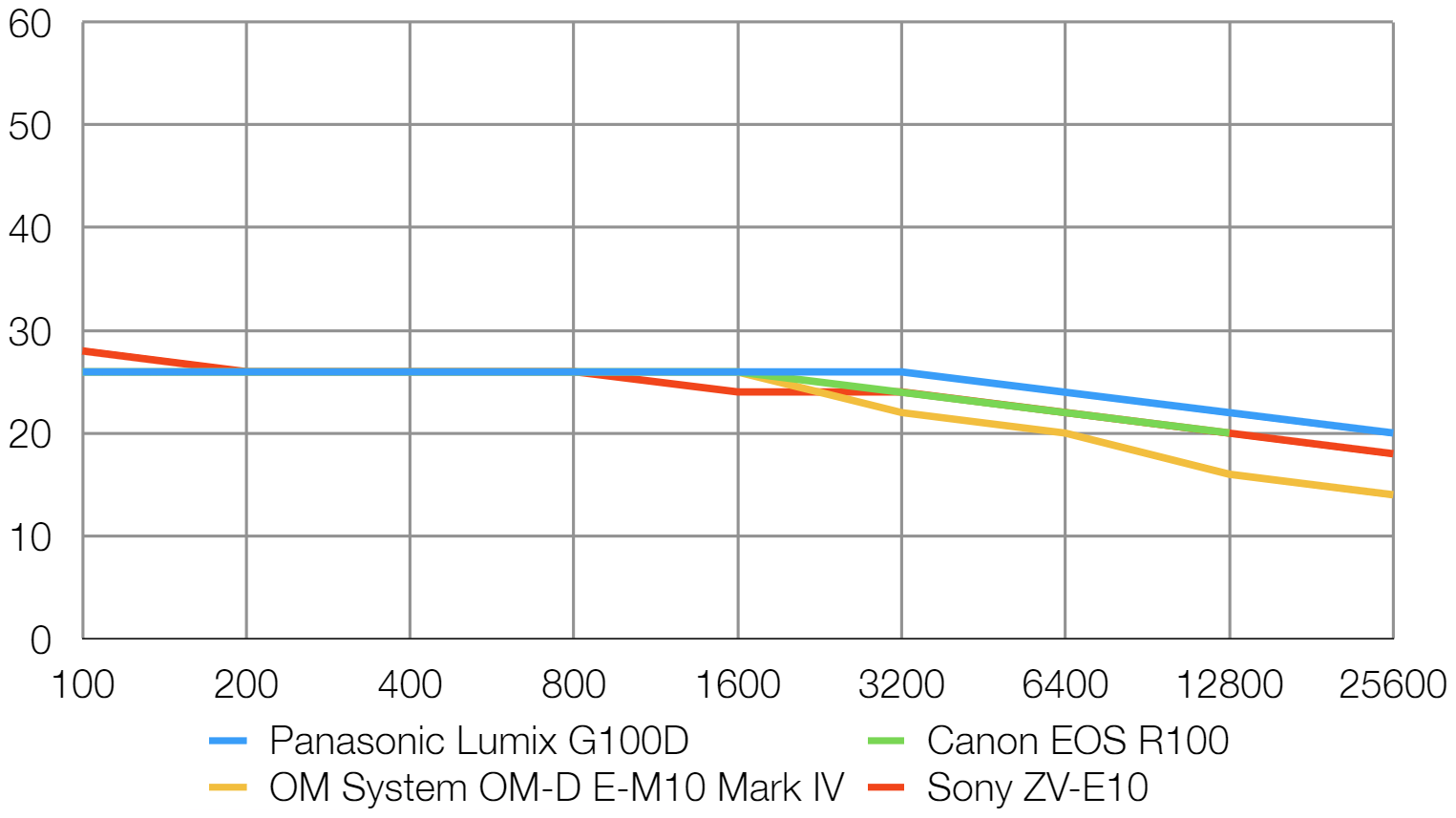
The 20.3MP G100D does well to hold its own against the 24MP Canon and Sony cameras when it comes to resolving fine detail.
Dynamic range:
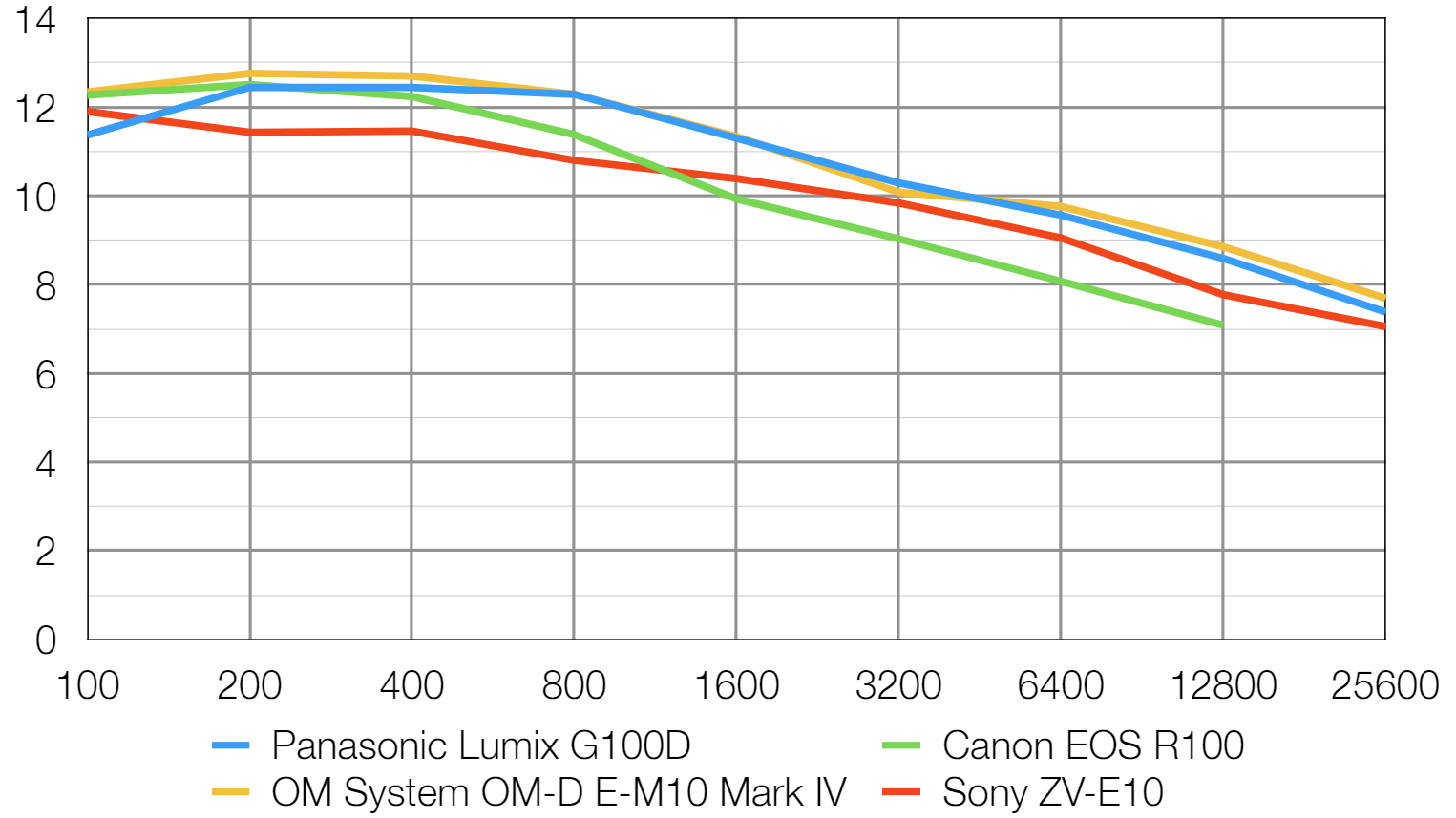
The relatively small size of the MFT sensor in the G100D certainly doesn't hold it back when it comes to capturing dynamic range, as it can record more highlight and shadow detail than the APS-C Canon and Sony cameras at most sensitivities.
Signal to noise ratio:
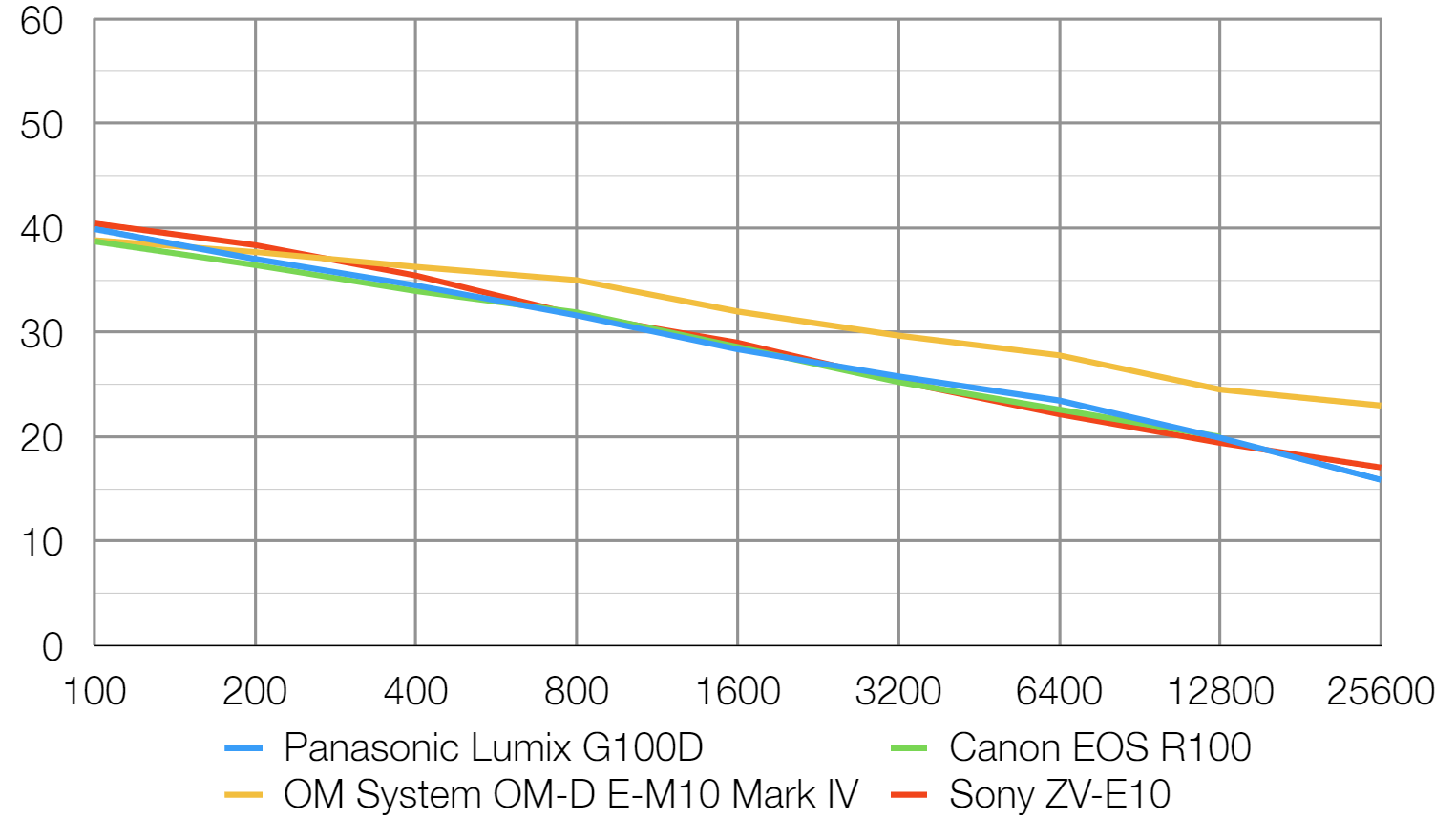
This test compares the amount of random noise generated by the camera at different ISO settings as a proportion of the actual image information (the 'signal'). Higher values are better and we expect to see the signal to ratio fall as the ISO is increased.
There's very little to separate the G100D from the EOS R100 and ZV-E10 when it comes to image clarity. The OM-D E-M10 IV has excellent high ISO noise control, which pays dividends in low light and gives it a clear edge in this test.
Panasonic Lumix G100D: Video performance
The Lumix G100D might not be one of the best hybrid cameras on the market, but it’s still a great choice for novices and budget-conscious buyers with ambitions to shoot both stills and video. It does both of these jobs well, though it’s with video that its limitations become more apparent.
Novice videographers will probably start by shooting handheld, and the G100D is not good at this. It does have electronic stabilization, but it’s not especially effective and definitely no substitute for in-body stabilization. With electronic IS switched on, you can get reasonably steady shots of static subjects, but you need real skill (and luck) to use smooth panning movements or follow moving subjects. It also imposes a crop in Standard mode and a very heavy crop in High mode.
This is a camera that needs to be on a tripod (a mini tripod on a cafe table is fine) or on a gimbal – there is an optional grip which will help too. Without any stabilizing support, the G100D is pretty shaky as a run-and-gun camera.
Panasonic has also faced criticism for its contrast-based DFD autofocus system which can produce a visible ‘pulsing’ effects in backgrounds when filming people talking. That wasn’t apparent in any of our test videos, and given the user level this camera is aimed at, it seems a pretty technical detail. The AF didn’t always respond quickly to changing subject distances in our video tests, but this is perhaps deliberate – in video, focus shifts do need to be progressive and smooth, not ‘snappy’.
The G100D’s OZO audio system is certainly cleverer than the average built in mic, but it too has its limitations. It can be set up with different pickup patterns from front to front-side, rear (for a ‘narration’ track, for example) or omnidirectional.
In practice, though, it’s extremely susceptible to wind noise outdoors. It’s good at picking up ambient audio even at some distance, but even a light breeze can cause horrible bufferting noises. It needs either a stick-on furry wind shield or a decent external mic.
Indoors, you don’t get any wind buffeting, but you do get a lot of room echo if you’re surrounded by hard surfaces. Here again, getting good audio really needs a good quality external mic and careful mic positioning too.
The actual 4K video quality is very good. However, the G100D is hamstrung by its poor stabilization and the limitations of any on-camera mic array, however directional its pickup pattern.
Panasonic Lumix G100D: Verdict
The Lumix G100D is cute, affordable and versatile. It’s great as a stills camera, but while its video features are also very good, it’s here that its limitations quickly become obvious. It’s a great camera to kickstart your vlogging career if you’re happy to use a tripod for most of your shots and you’re prepared to invest in an external mic, but for run and gun style shooting it’s just out of its depth. You could say the same about similarly priced rivals which don’t have IBIS, so the G100D is not the only mirrorless camera that might leave smartphone upgraders disappointed. A mirrorless camera will give you better video quality than you’re phone, but you’re going to have to work harder to achieve it.
| Features | The EVF, vari-angle screen and 4K video are all great, but the lack of in-body stabilization is an issue | ★★★★ |
| Design | It’s tiny, it’s cute, but the baby-DSLR design has been shrunk perhaps a little too far, leaving limited room for controls and getting a good grip | ★★★★ |
| Performance | The photo and video quality is fine, but while the lack of IBIS doesn’t hinder stills photography too much, it’s a real issue for handheld video | ★★★★ |
| Value | The Lumix G100D is cheap, but not the cheapest on the market, as the APS-C EOS R100 is cheaper still | ★★★★ |
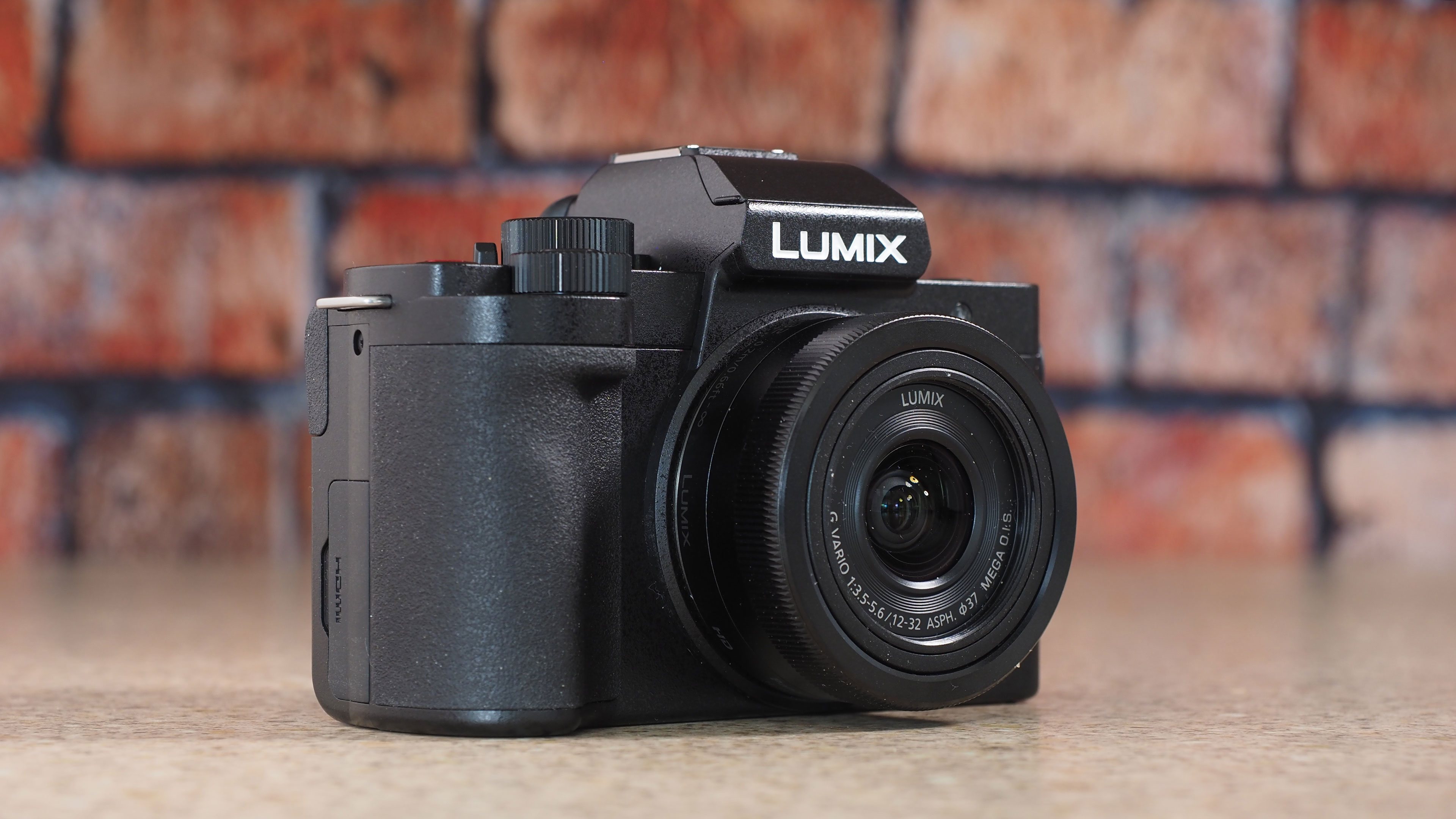
✅ Buy this if...
- You want a low-cost hybrid stills/video camera
- You have small hands and you want a small camera!
- You don't mind using a mini tripod, grip or gimbal
🚫 Don't buy this if...
- You like run-and-gun style filming
- You want in-body stabilization
- You’re into low light and action photography
Alternatives
Typically sold with a basic 18-45mm kit lens, the Canon EOS R100 is so cheap it’s hard not to recommend it for beginners. It does use older tech which limits its video capabilities and has no in-body stabilization, but it’s a great camera to get started with nonetheless.
The OM System OM-D E-M10 Mark IV is a little more expensive than the G100D, but probably worth it, especially for stills photography. Importantly, it does have in-body stabilization and, while it does use contrast AF, it doesn’t seem to suffer the same ‘pulsing’ issues as Panasonic’s system.

Rod is an independent photography journalist and editor, and a long-standing Digital Camera World contributor, having previously worked as DCW's Group Reviews editor. Before that he has been technique editor on N-Photo, Head of Testing for the photography division and Camera Channel editor on TechRadar, as well as contributing to many other publications. He has been writing about photography technique, photo editing and digital cameras since they first appeared, and before that began his career writing about film photography. He has used and reviewed practically every interchangeable lens camera launched in the past 20 years, from entry-level DSLRs to medium format cameras, together with lenses, tripods, gimbals, light meters, camera bags and more. Rod has his own camera gear blog at fotovolo.com but also writes about photo-editing applications and techniques at lifeafterphotoshop.com
